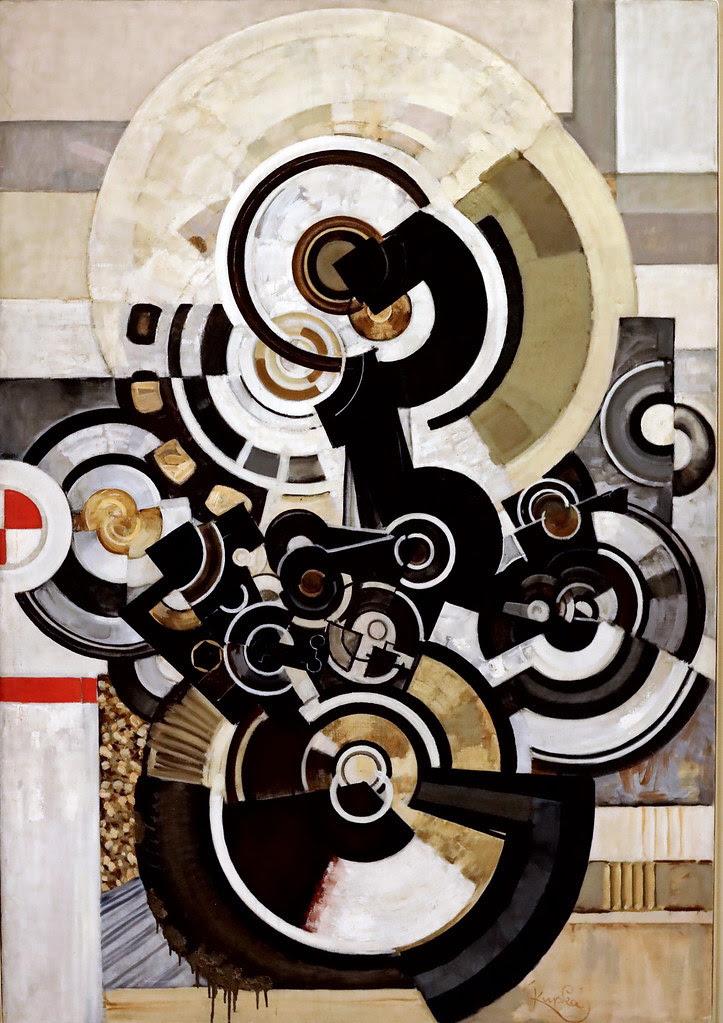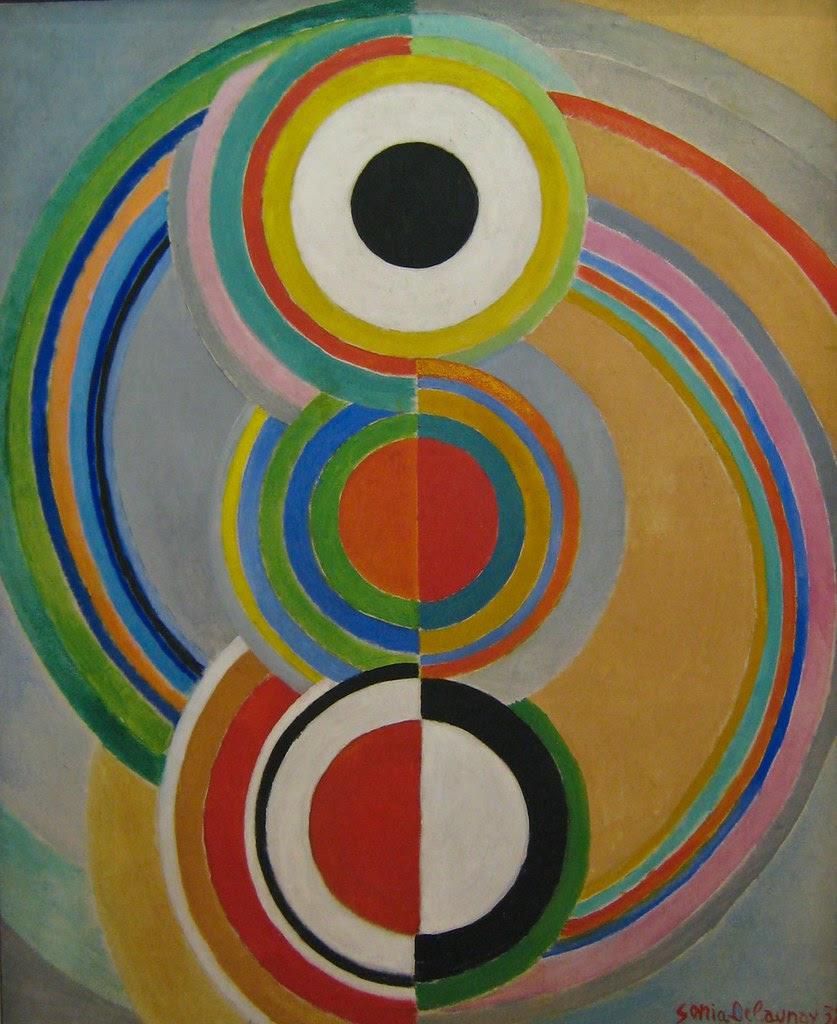Delaunay, with his embrace of vibrant tones, seemed an ideal spearhead. He was joined by the likes of Sonia Delaunay-Terk, Francis Picabia, Marcel Duchamp, Fernand Léger, and Frantisek Kupka.
While other Cubist artists struggled to combine their interests in intangible things like motion and time with representational imagery, Delaunay delved deeply into the actual sensation and process of vision. He was less preoccupied with what the human eye sees than in how it sees, and he aimed to give form to the optical structure of vision.
He strove to pictorialize the science happening within the human retina and the systems by which the brain processes color and light, all in an earnest effort to distill developing anatomical science into works of art.
Orphic canvases are full of bright, electric hues and hypnotic spheres made entirely of color. Though Delaunay’s color combinations might seem random, the artists chose compositional arrangements with color theory in mind. He looked to the work of scientists such as Eugène Chevreul, who determined that certain colors, when placed together, elicited harmonious contrasts and optical blending.
Kupka’s Orphic works incorporate more varied geometrical shapes; his spheres seem to extend forward into the viewer’s space, arranged as they are in front of blocky vertical lines and negative space.































